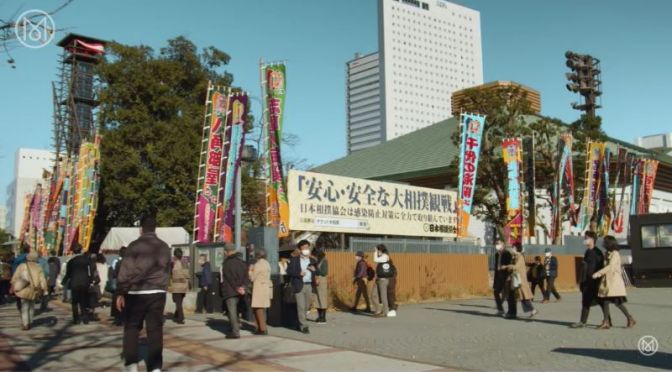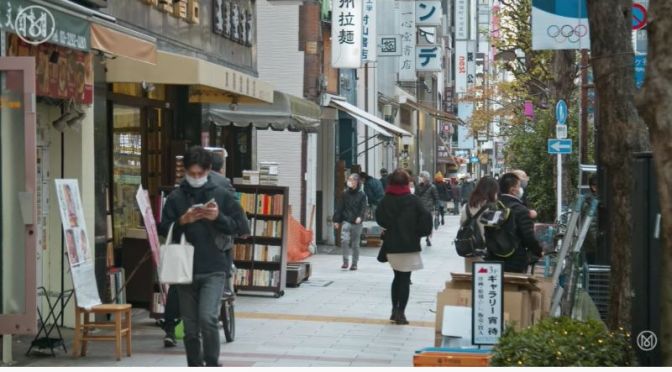Georgetown is a charming area with Federal-style architecture, cobblestone streets and fashion and design shops. The dining scene is defined by upmarket restaurants and waterfront seafood spots, while nightlife spans boisterous college bars, traditional taverns and intimate live music lounges. Georgetown Waterfront Park has a riverside promenade and gardens, and there’s a bike path along the C&O Canal.
Tag Archives: Neighborhoods
Poetic Views: London’s ‘Maida Vale’ Inspired Lord Byron & Robert Browning
The new crop of Italianate villas, iced white with stucco like giant cakes, and the rows of brick terraces and mansion blocks that followed them soon became home to publishers (Charles Ollier), artists (Sir John Tenniel) and poets: Robert Browning lived at 19, Warwick Crescent for more than 20 years and the pool where the Grand Union and Regent’s canals meet is now called after him.
Watercolor Paintings by Liam O’Farrell
Although Browning has been credited with naming the canal area Little Venice, it was Byron that first (facetiously) compared the basin to the Italian lagoon.

Story has it that the poet used to walk along the Paddington arm of the Grand Union Canal with his publisher, John Murray — helpfully pointing to the bridge where another publisher had once drowned himself — and was inspired to write that ‘there would be nothing to make the canal of Venice more poetical than that of Paddington, were it not for its artificial adjuncts’; a fair point, considering that, at the time, the London canals were lined with warehouses and wrapped in soot.
Even today, however, the elegant terraces halfway up Randolph Avenue, with their tripartite arched windows, are far more reminiscent of the Italian city than Little Venice itself, where the serene buildings and tree-lined banks have a rather more bucolic feel.
NYC Views: ‘Celebrating The Beauty Of Chinatown’
Henry Chang, the unofficial O.G. of Chinatown, waxes nostalgic for his friend, the famed photographer Corky Lee, and the beauty of the neighborhood’s streets.
Vibrant Chinatown is a densely populated neighborhood that draws foodies and tourists to its many Chinese and Southeast Asian restaurants for dumplings, pork buns and hand-pulled noodles. The busy sidewalks are packed with souvenir stores, bubble tea shops, and markets selling everything from fresh and dried fish to herbs and spices. Locals hang out in leafy Columbus Park for Tai Chi, chess and mahjong.
Walks: ‘De Pijp, Amsterdam, Netherlands’ (4K Video)
De Pijp (English: The Pipe) is a neighbourhood of Amsterdam, Netherlands. It is located directly south of Amsterdam’s city centre and it is part of the borough Amsterdam-Zuid, in a part of the city known as the Old South (Oud Zuid). It is served by De Pijp metro station.
Most streets in De Pijp are named after Dutch painters, like Jan Steen, Frans Hals, Ruysdael and Vincent van Gogh. Diamantbuurt, Nieuwe Pijp and Oude Pijp are the three districts composing the area. The busiest street market of the Netherlands, the Albert Cuyp Market, is located in De Pijp. It is open six days per week and attracts tourists.
The former Heineken brewery is also a local tourist attraction; the former town hall of Nieuwer-Amstel is one of De Pijp’s most notable monuments. Next to the former Heineken brewery is the Marie Heinekenplein, which has a number of bars and cafes. Along the canal Ruysdaelkade, there is a small red-light district.
Travel Guides: ‘Ryogoku And Kuramae’, Tokyo, Japan
With any luck you’ll spot a sumo wrestler out and about in Ryogoku, the riverside neighbourhood that is home to Kokugikan, Tokyo’s distinctive sumo stadium. Across the water is Kuramae, another old neighbourhood that has long been famous for its craft workshops and still hums with industry.
The historic center of Japanese wrestling, riverside Ryogoku is home to Ryogoku Kokugikan arena, which hosts sumo and boxing, as well as classical concerts. Nearby Ryogoku Edo Noren is a dining street resembling an Edo-period village, where restaurants serve chanko nabe, the traditional protein-rich stew favored by wrestlers. In the striking, modern Edo-Tokyo Museum, scale and life-sized models recreate feudal life.
Travel Guide: ‘Kanda Neighborhood, Tokyo’
This historic corner of northeast Tokyo was once described as a place for “universities, bookshops and intellectuals”. Academic institutions are still there – along with the Holy Resurrection Cathedral – but Kanda is also home to electronics district Akihabara, a huge shrine and dozens of Japanese curry restaurants too.
Sprawling Kanda covers central districts like neon-lit Akihabara, known for its electronics stores, and Jimbocho, filled with bookshops. Students from the area’s many universities pack into bars, noodle shops, and karaoke rooms at night. Shinto shrines are found on quieter backstreets, including the nearly 1,300-year-old Kanda Myojin Shrine, with its crimson gate and altars to ancient gods of good fortune.
Travel Guides: ‘Yanaka Sector In Tokyo, Japan’
Yanaka moves at a different pace from much of Tokyo. As the city has changed around it, Yanaka has retained its old-fashioned atmosphere. Vacant wooden buildings have been brought back to life as new businesses such as cafés, noodle shops and galleries give them a fresh purpose.
Yanaka is a sector of Taito, Tokyo, Japan and, along with nearby Nezu and Sendagi neighborhoods in Bunkyo ward, is one of the few Tokyo neighborhoods in which the old Shitamachi atmosphere can still be felt. Located north of Ueno, Yanaka includes the large Yanaka Cemetery, which takes up most of Yanaka 7-chome.












